Ground Penetrating Radar Investigation of Late Pleistocene Shorelines of Pluvial Lake Clover, Elko County, Nevada, USA
Abstract
1. Introduction
2. Materials and Methods
2.1. Setting
2.2. Field Methods
2.3. Data Processing
3. Results
3.1. Transect A
3.1.1. Shoreline at 1725 m
3.1.2. Shoreline at 1724 m
3.1.3. Shoreline at 1723 m
3.1.4. Shoreline at 1721 m
3.1.5. Shoreline at 1720 m
3.2. Transect B
Shoreline at 1718 m
3.3. Transect C
3.3.1. Shoreline at 1715 m
3.3.2. Shoreline at 1712 m
4. Discussion
4.1. Common Features of the GPR Profiles
4.2. Model for Beach Ridge Construction
4.3. Implications for Relative Age and Paleoclimate Conditions during Beach Ridge Formation
4.4. Limitations and Directions for Further Research
5. Conclusions
Funding
Acknowledgments
Conflicts of Interest
References
- Grayson, D. The Great Basin: A Natural History; The University of California Press: Oakland, CA, USA, 2011. [Google Scholar]
- Poage, M.; Chamberlain, C. Stable isotopic evidence for a pre-Middle Miocene rain shadow in the western Basin and Range: Implications for the paleotopography of the Sierra Nevada. Tectonics 2002, 21, 16-1–16-10. [Google Scholar] [CrossRef]
- Mifflin, M.D.; Wheat, M.M. Pluvial Lakes and Estimated Pluvial Climates of Nevada; Bulletin Nevada Bureau of Mines and Geology: Reno, NV, USA, 1979. [Google Scholar]
- Reheis, M.C. Extent of Pleistocene Lakes in the Western Great Basin; U.S. Geological Survey: Reston, VA, USA, 1999.
- Gilbert, G.K. Lake Bonneville; U.S. Geological Survey: Reston, VA, USA, 1890; p. 438.
- Burr, T.N.; Currey, D.R. The Stockton Bar. In The Footsteps of G. K. Gilbert; Lake Bonneville and Neotectonics of the Eastern Basin and Range Province; Guidebook for Field Trip Twelve; Utah Geological Survey: Salt Lake City, UT, USA, 1988; pp. 66–73. [Google Scholar]
- Russell, I.C. Geological History of Lake Lahontan, a Quaternary Lake of Northwestern Nevada; U.S. Geological Survey: Reston, VA, USA, 1885; p. 288.
- Philippsen, B. The freshwater reservoir effect in radiocarbon dating. Herit. Sci. 2013, 1, 24. [Google Scholar] [CrossRef]
- Owen, L.A.; Bright, J.; Finkel, R.C.; Jaiswal, M.K.; Kaufman, D.S.; Mahan, S.; Radtke, U.; Schneider, J.S.; Sharp, W.; Singhvi, A.K. Numerical dating of a Late Quaternary spit-shoreline complex at the northern end of Silver Lake playa, Mojave Desert, California: A comparison of the applicability of radiocarbon, luminescence, terrestrial cosmogenic nuclide, electron spin resonance, U-series and amino acid racemization methods. Quat. Int. 2007, 166, 87–110. [Google Scholar]
- Owen, L.A.; Frankel, K.L.; Knott, J.R.; Reynhout, S.; Finkel, R.C.; Dolan, J.F.; Lee, J. Beryllium-10 terrestrial cosmogenic nuclide surface exposure dating of Quaternary landforms in Death Valley. Geomorphology 2011, 125, 541–557. [Google Scholar] [CrossRef]
- Adams, K.D.; Wesnousky, S.G. Shoreline processes and the age of the Lake Lahontan highstand in the Jessup Embayment, Nevada. Geol. Soc. Am. Bull. 1998, 110, 1318–1332. [Google Scholar] [CrossRef]
- Bristow, C.S.; Jol, H.M. An introduction to ground penetrating radar (GPR) in sediments. Geol. Soc. Lond. Spec. Publ. 2003, 211, 1–7. [Google Scholar] [CrossRef]
- Jol, H.M.; Bristow, C.S. GPR in sediments: Advice on data collection, basic processing and interpretation, a good practice guide. Geol. Soc. Lond. Spec. Publ. 2003, 211, 9–27. [Google Scholar] [CrossRef]
- Smith, D.G.; Simpson, C.J.; Jol, H.M.; Meyers, R.A.; Currey, D.R. GPR stratigraphy used to infer transgressive deposition of spits and a barrier, Lake Bonneville, Stockton, Utah, USA. Geol. Soc. Lond. Spec. Publ. 2003, 211, 79–86. [Google Scholar] [CrossRef]
- Schide, K.H.; Jewell, P.W.; Oviatt, C.G.; Jol, H.M.; Larsen, C.F. Transgressive-phase barriers as indicators of basin-wide lake-level changes in late Pleistocene Lake Bonneville, Utah, USA. Geomorphology 2018, 318, 390–403. [Google Scholar] [CrossRef]
- Smith, K.M.; McBride, J.H.; Nelson, S.T.; Keach, R.W.; Hudson, S.M.; Tingey, D.G.; Rey, K.A.; Carling, G.T. An integrated high-resolution geophysical and geologic visualization of a Lake Bonneville shoreline deposit (Utah, USA). Interpretation 2019, 7, T265–T282. [Google Scholar] [CrossRef]
- Wilkins, D.E.; Clement, W.P. Palaeolake shoreline sequencing using ground penetrating radar: Lake Alvord, Oregon, and Nevada. Spec. Pap. Geol. Soc. Am. 2007, 432, 103. [Google Scholar]
- Craig, M.S.; Jol, H.M.; Teitler, L.; Warnke, D.A. Geophysical surveys of a pluvial lake barrier deposit, Beatty Junction, Death Valley, California, USA. Sediment. Geol. 2012, 269, 28–36. [Google Scholar] [CrossRef]
- Munroe, J.S.; Walcott, C.; Amidon, W.H. A Top-to-Bottom Luminescence-Based Chronology of the Post-LGM Regression of a Great Basin Pluvial Lake, Nevada, USA. In Proceedings of the AGU Fall Meeting 2019, San Francisco, CA, USA, 9–13 December 2019. [Google Scholar]
- Munroe, J.S.; Laabs, B.J. Temporal correspondence between pluvial lake highstands in the southwestern US and Heinrich Event 1. J. Quat. Sci. 2013, 28, 49–58. [Google Scholar] [CrossRef]
- Munroe, J.S.; Gorin, A.L.; Stone, N.N.; Amidon, W.H. Properties, age, and significance of dunes near snow water lake, Elko County, Nevada. Quat. Res. 2017, 87, 24–36. [Google Scholar] [CrossRef]
- Martinez, A.; Brynes, A.P. Modeling Dielectric-Constant Values of Geologic Materials: An Aid to Ground-Penetrating Radar Data Collection and Interpretation; Kansas Geological Survey: Lawrence, KS, USA, 2001; Volume 247. [Google Scholar]
- Munroe, J.S.; Laabs, B.J. Latest Pleistocene history of pluvial Lake Franklin, northeastern Nevada, USA. Geol. Soc. Am. Bull. 2013, 125, 322–342. [Google Scholar] [CrossRef]
- Thompson, T.A.; Baedke, S.J. Beach-ridge development in Lake Michigan: Shoreline behavior in response to quasi-periodic lake-level events. Mar. Geol. 1995, 129, 163–174. [Google Scholar] [CrossRef]
- Johnston, J.W.; Thompson, T.A.; Baedke, S.J. Systematic pattern of beach-ridge development and preservation: Conceptual model and evidence from ground penetrating radar. Spec. Pap. Geol. Soc. Am. 2007, 432, 47. [Google Scholar]
- Atwood, G. Geomorphology applied to flooding problems of closed-basin lakes … specifically Great Salt Lake, Utah. In Geomorphology and Natural Hazards; Morisawa, M., Ed.; Elsevier: Amsterdam, The Netherlands, 1994; pp. 197–219. ISBN 978-0-444-82012-9. [Google Scholar]
- Atwood, G.; Wambeam, T.J.; Anderson, N.J. Chapter 1—The Present as a Key to the Past: Paleoshoreline Correlation Insights from Great Salt Lake. In Developments in Earth Surface Processes; Oviatt, C.G., Shroder, J.F., Eds.; Elsevier: Lake Bonneville, UT, USA, 2016; Volume 20, pp. 1–27. [Google Scholar]
- Antevs, E.V. The Great Basin, with emphasis on glacial and postglacial times: Climatic changes and pre-white man. Bull. Univ. Utah 1948, 38, 168–191. [Google Scholar]
- Bartlein, P.J.; Anderson, K.H.; Anderson, P.M.; Edwards, M.E.; Mock, C.J.; Thompson, R.S.; Webb, R.S.; Webb, T., III; Whitlock, C. Paleoclimate simulations for North America over the past 21,000 years; features of the simulated climate and comparisons with paleoenvironmental data; Late Quaternary climates; data synthesis and model experiments. Quat. Sci. Rev. 1998, 17, 549–585. [Google Scholar] [CrossRef]
- Hudson, A.M.; Hatchett, B.J.; Quade, J.; Boyle, D.P.; Bassett, S.D.; Ali, G.; Marie, G. North-south dipole in winter hydroclimate in the western United States during the last deglaciation. Sci. Rep. 2019, 9, 4826. [Google Scholar] [CrossRef]
- Oster, J.L.; Ibarra, D.E.; Winnick, M.J.; Maher, K. Steering of westerly storms over western North America at the last glacial maximum. Nat. Geosci. 2015, 8, 201–205. [Google Scholar] [CrossRef]
- Lyle, M.; Heusser, L.; Ravelo, C.; Yamamoto, M.; Barron, J.; Diffenbaugh, N.S.; Herbert, T.; Andreasen, D. Out of the tropics: The Pacific, Great Basin lakes, and late Pleistocene water cycle in the western United States. Science 2012, 337, 1629–1633. [Google Scholar] [CrossRef]
- Hemming, S.R. Heinrich events: Massive late Pleistocene detritus layers of the North Atlantic and their global climate imprint. Rev. Geophys. 2004, 42, RG1005.1–RG1005.43. [Google Scholar] [CrossRef]
- Bond, G.C.; Heinrich, H.; Broecker, W.S.; Labeyrie, L.D.; McManus, J.; Andrews, J.; Huon, S.; Jantschik, R.; Clasen, S.; Simet, C.; et al. Evidence for massive discharges of icebergs into the North Atlantic ocean during the last glacial period. Nature 1992, 360, 245–249. [Google Scholar] [CrossRef]
- McManus, J.F.; Francois, R.; Gherardi, J.M.; Keigwin, L.D.; Brown-Leger, S. Collapse and rapid resumption of Atlantic meridional circulation linked to deglacial climate changes. Nature 2004, 428, 834–837. [Google Scholar] [CrossRef] [PubMed]
- Bard, E.; Rostek, F.; Turon, J.-L.; Gendreau, S. Hydrological impact of Heinrich events in the subtropical Northeast Atlantic. Science 2000, 289, 1321–1324. [Google Scholar] [CrossRef] [PubMed]
- Denton, G.H.; Alley, R.B.; Comer, G.C.; Broecker, W.S. The role of seasonality in abrupt climate change. Quat. Sci. Rev. 2005, 24, 1159–1182. [Google Scholar] [CrossRef]
- Okumura, Y.M.; Deser, C.; Hu, A.; Timmermann, A.; Xie, S.P. North Pacific climate response to freshwater forcing in the subarctic North Atlantic: Oceanic and atmospheric pathways. J. Clim. 2009, 22, 1424–1445. [Google Scholar] [CrossRef]
- Asmerom, Y.; Polyak, V.J.; Burns, S.J. Variable winter moisture in the southwestern United States linked to rapid glacial climate shifts. Nat. Geosci. 2010, 3, 114–117. [Google Scholar] [CrossRef]
- Reheis, M. Highest Pluvial-Lake Shorelines and Pleistocene Climate of the Western Great Basin. Quat. Res. 1999, 52, 196–205. [Google Scholar] [CrossRef]
- Oviatt, C.G. Lake Bonneville fluctuations and global climate change. Geology 1997, 25, 155–158. [Google Scholar] [CrossRef]
- Benson, L.; Lund, S.; Negrini, R.; Linsley, B.; Zic, M. Response of North American Great Basin lakes to Dansgaard-Oeschger oscillations. Quat. Sci. Rev. 2003, 22, 2239–2251. [Google Scholar] [CrossRef]
- Munroe, J.S.; Doolittle, J.A.; Kanevskiy, M.Z.; Hinkel, K.M.; Nelson, F.E.; Jones, B.M.; Shur, Y.; Kimble, J.M. Application of ground-penetrating radar imagery for three-dimensional visualisation of near-surface structures in ice-rich permafrost, Barrow, Alaska. Permafr. Periglac. Process. 2007, 18, 309–321. [Google Scholar] [CrossRef]
- Baker, G.S.; Jordan, T.E.; Pardy, J. An introduction to ground penetrating radar (GPR). Spec. Pap. Geol. Soc. Am. 2007, 432, 1. [Google Scholar]
- Smith, D.G.; Jol, H.M. Ground penetrating radar: Antenna frequencies and maximum probable depths of penetration in Quaternary sediments. J. Appl. Geophys. 1995, 33, 93–100. [Google Scholar] [CrossRef]
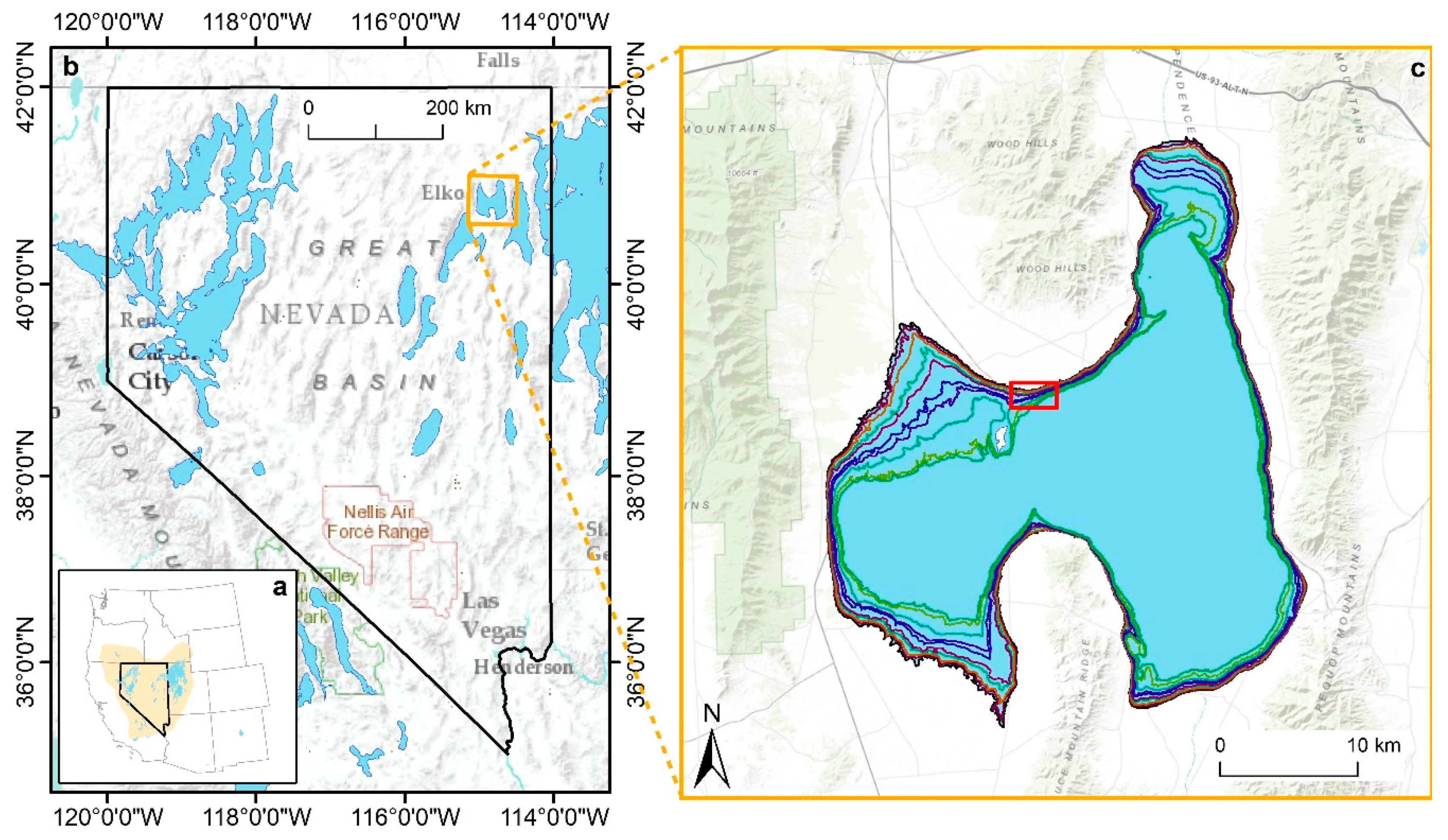
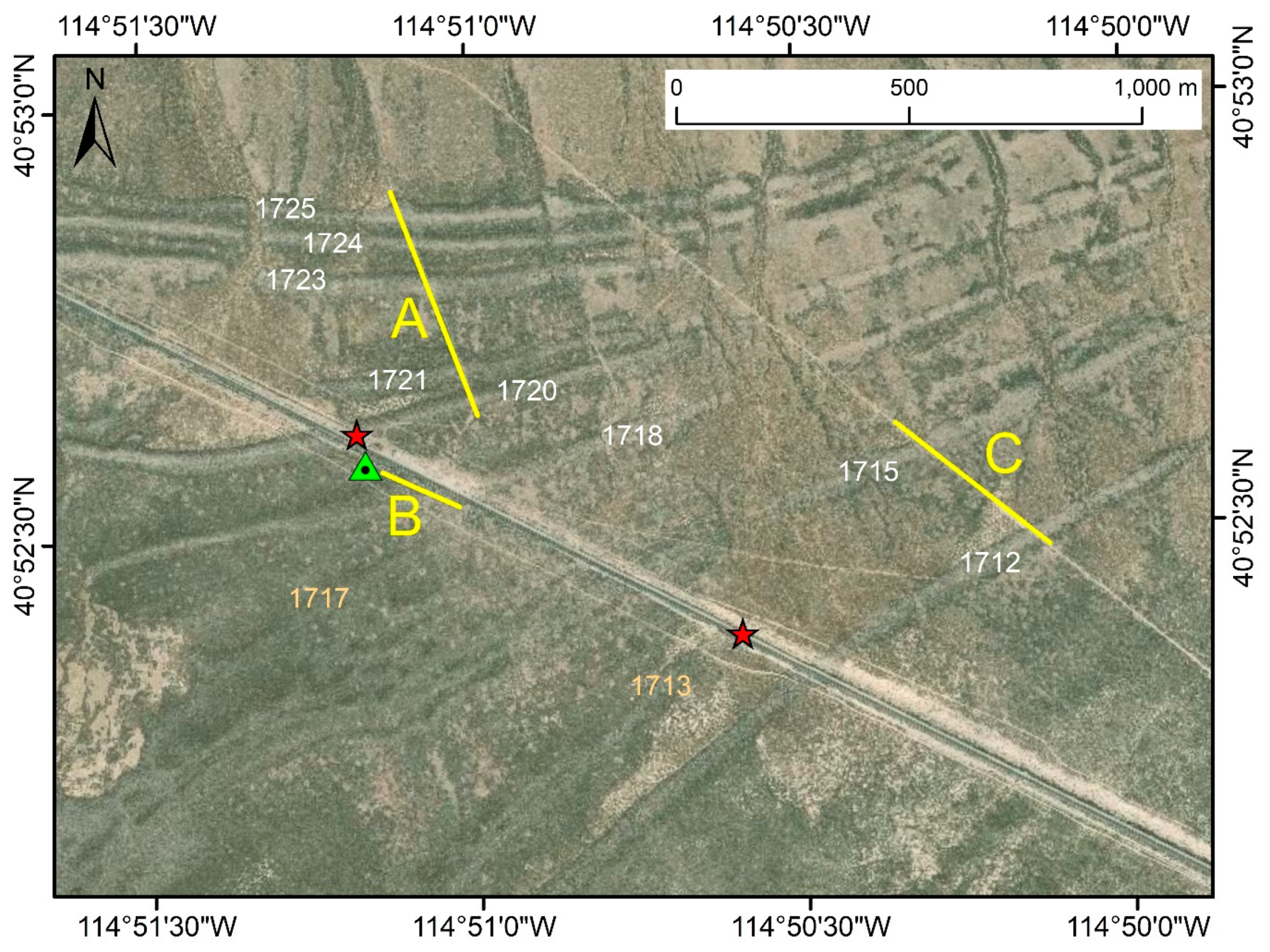

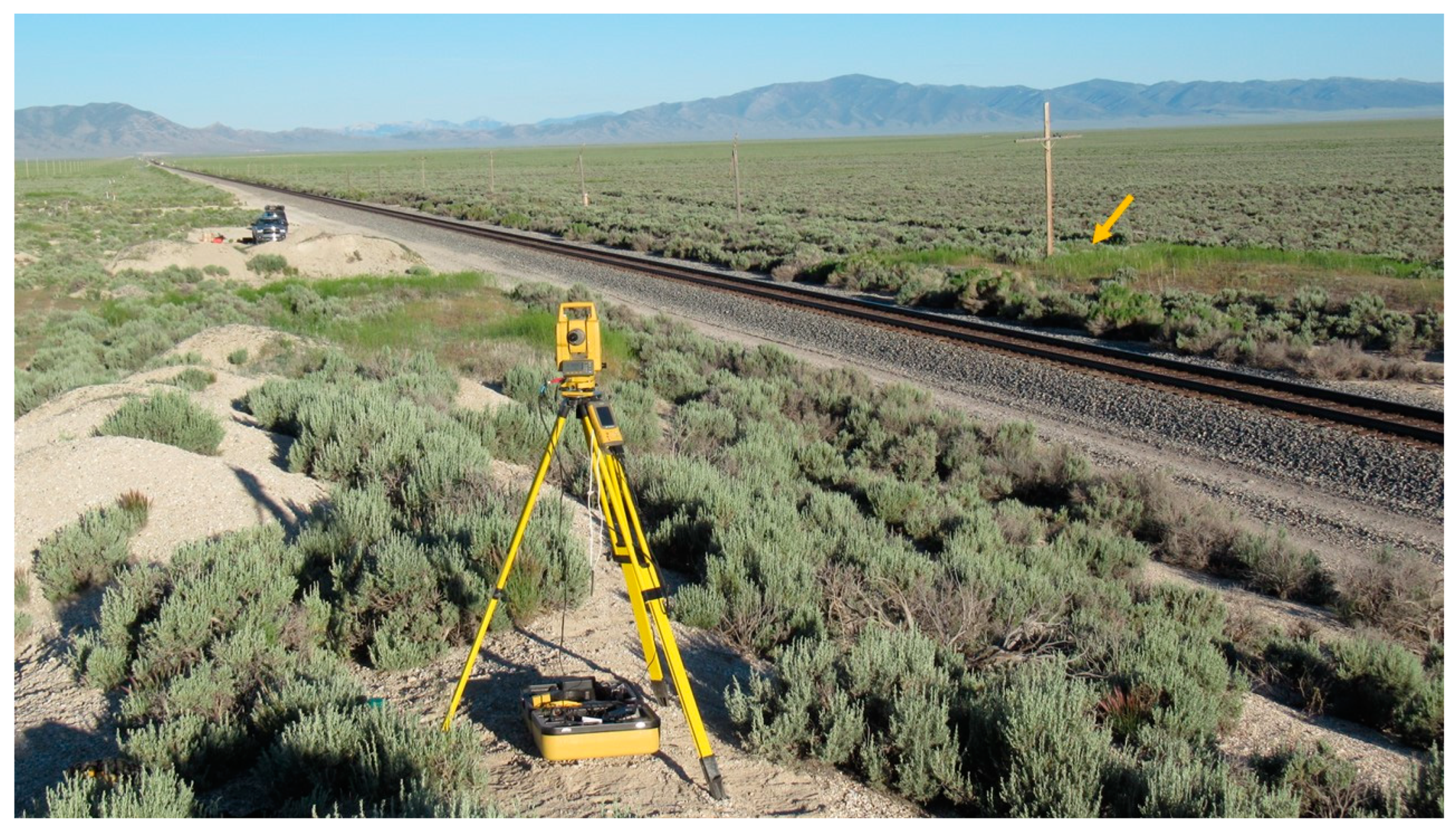
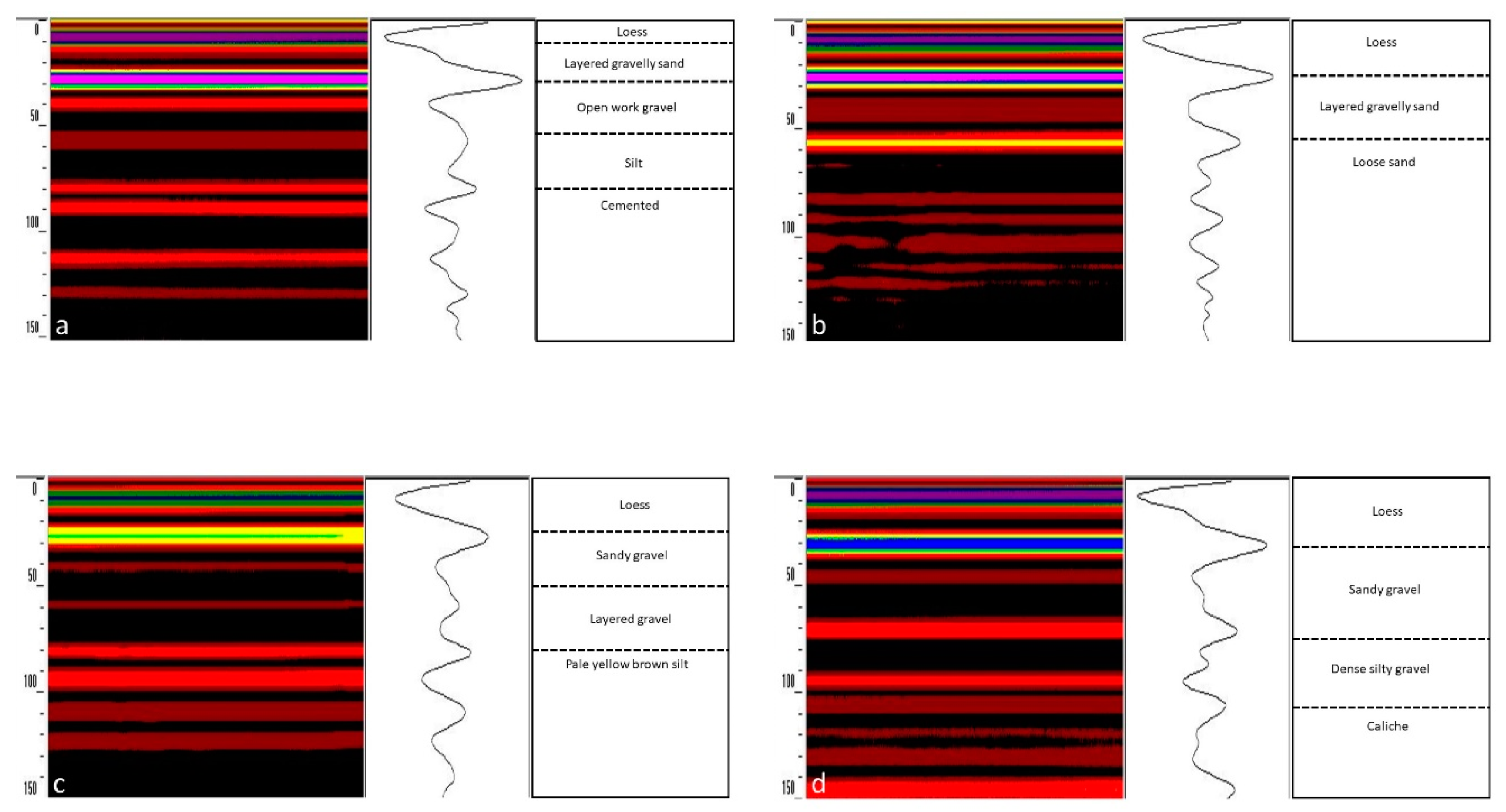
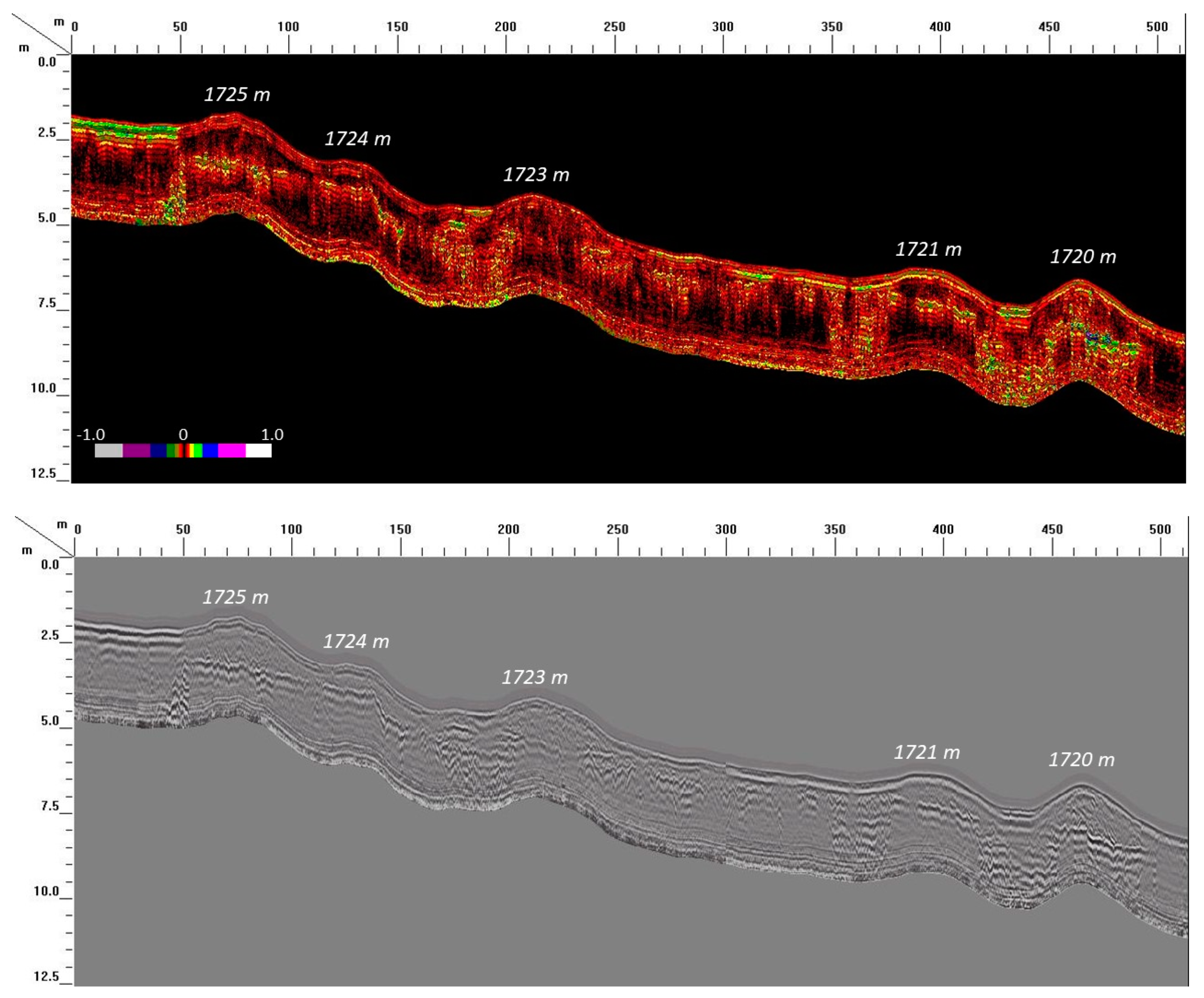
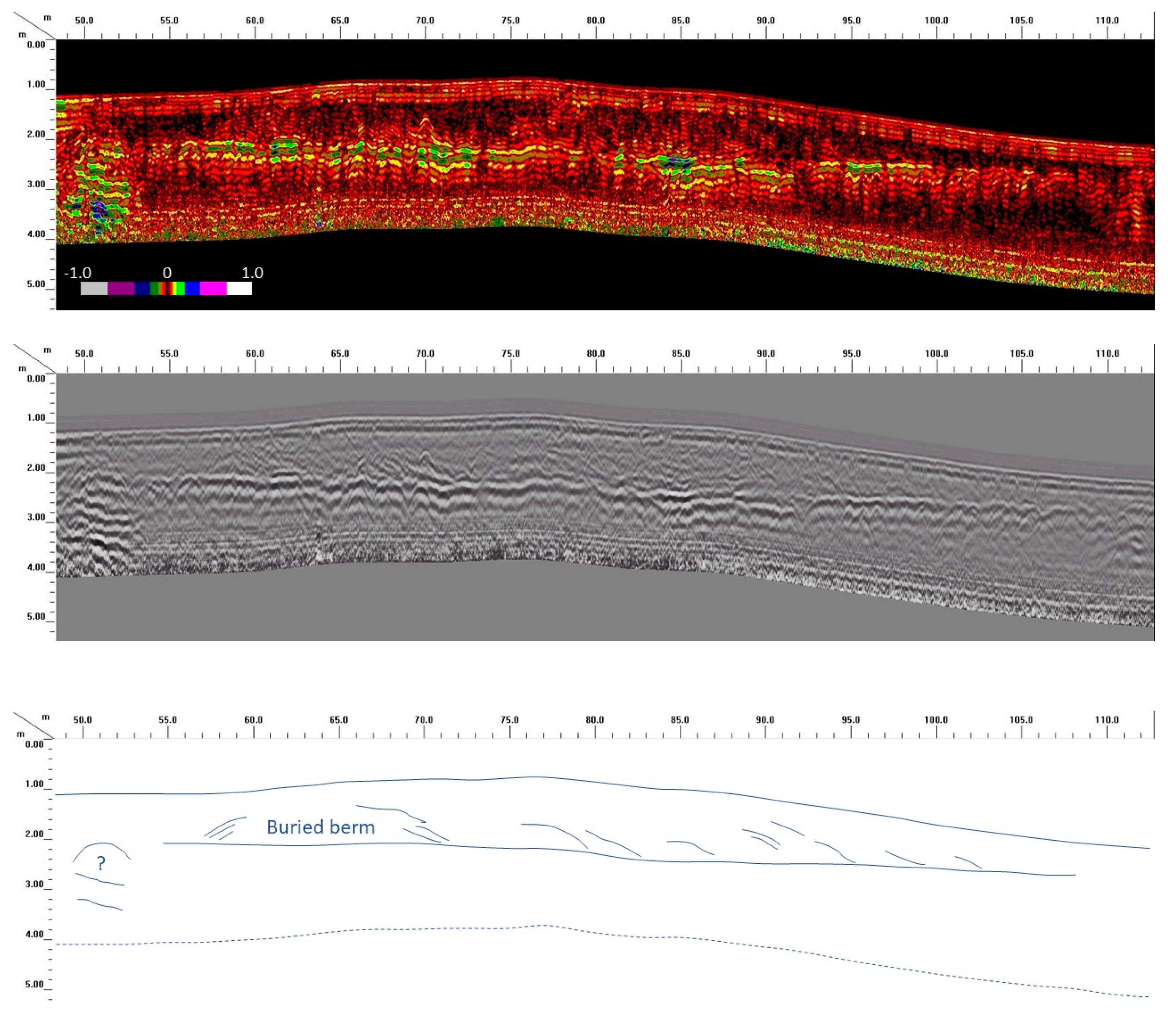
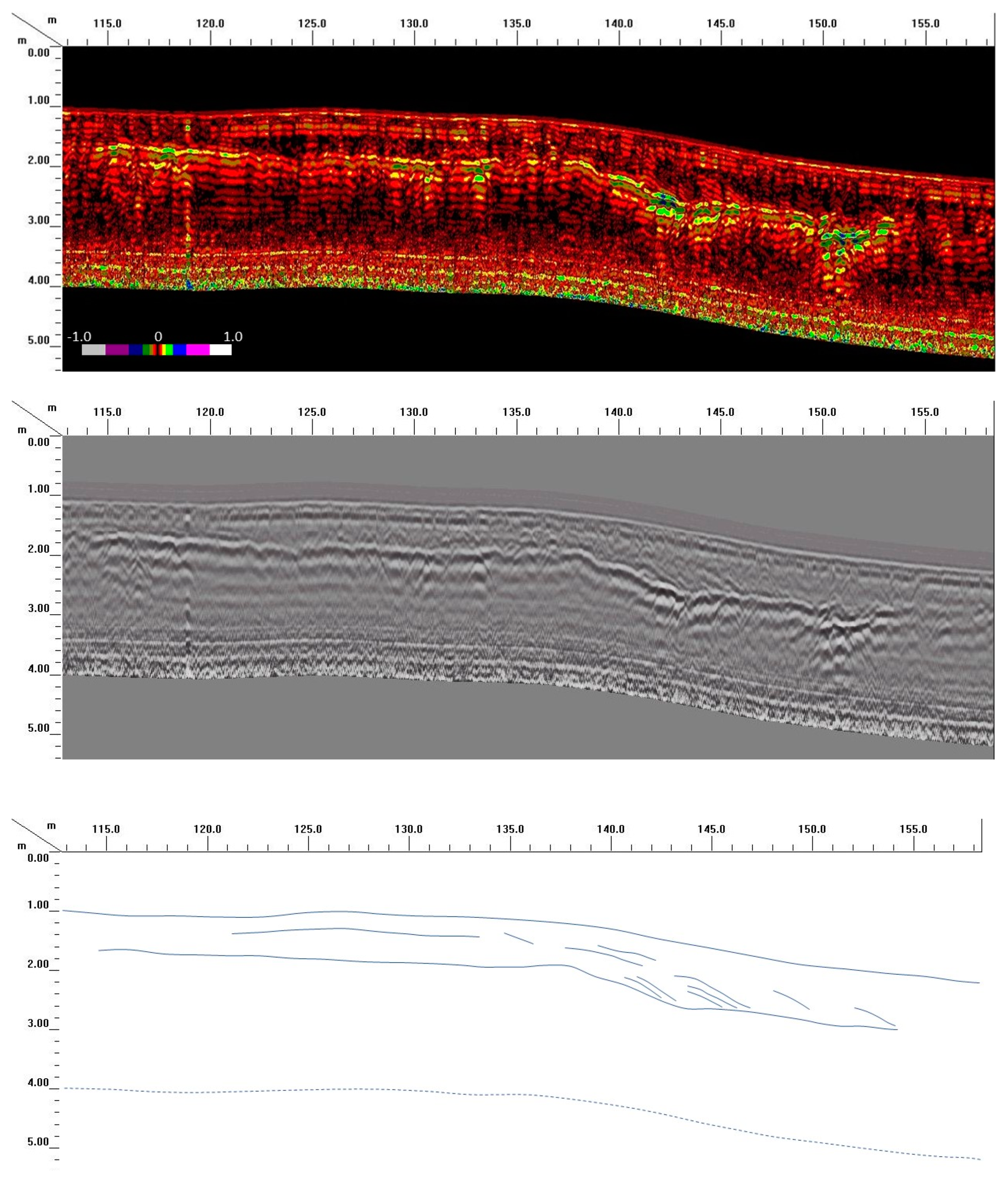
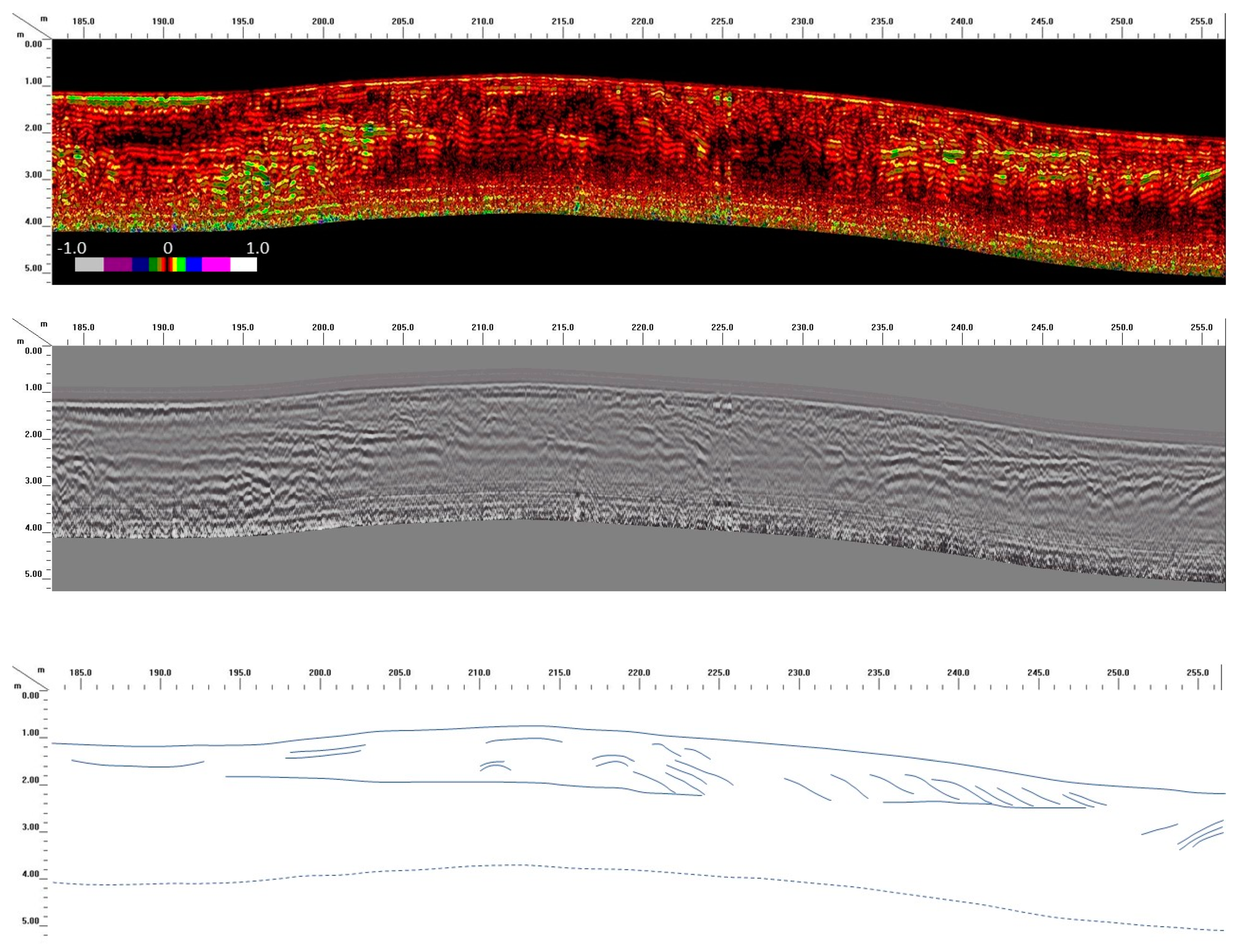
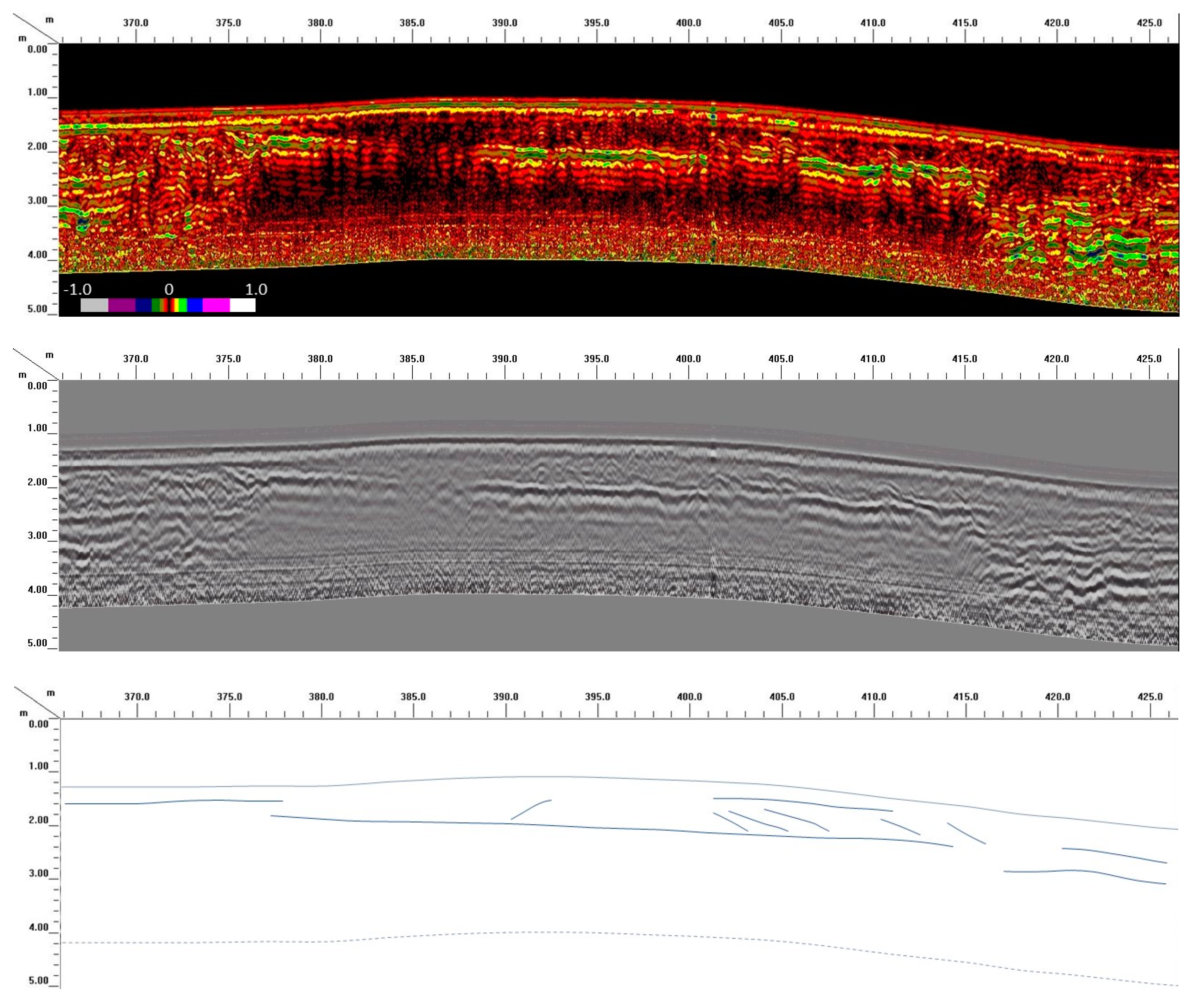
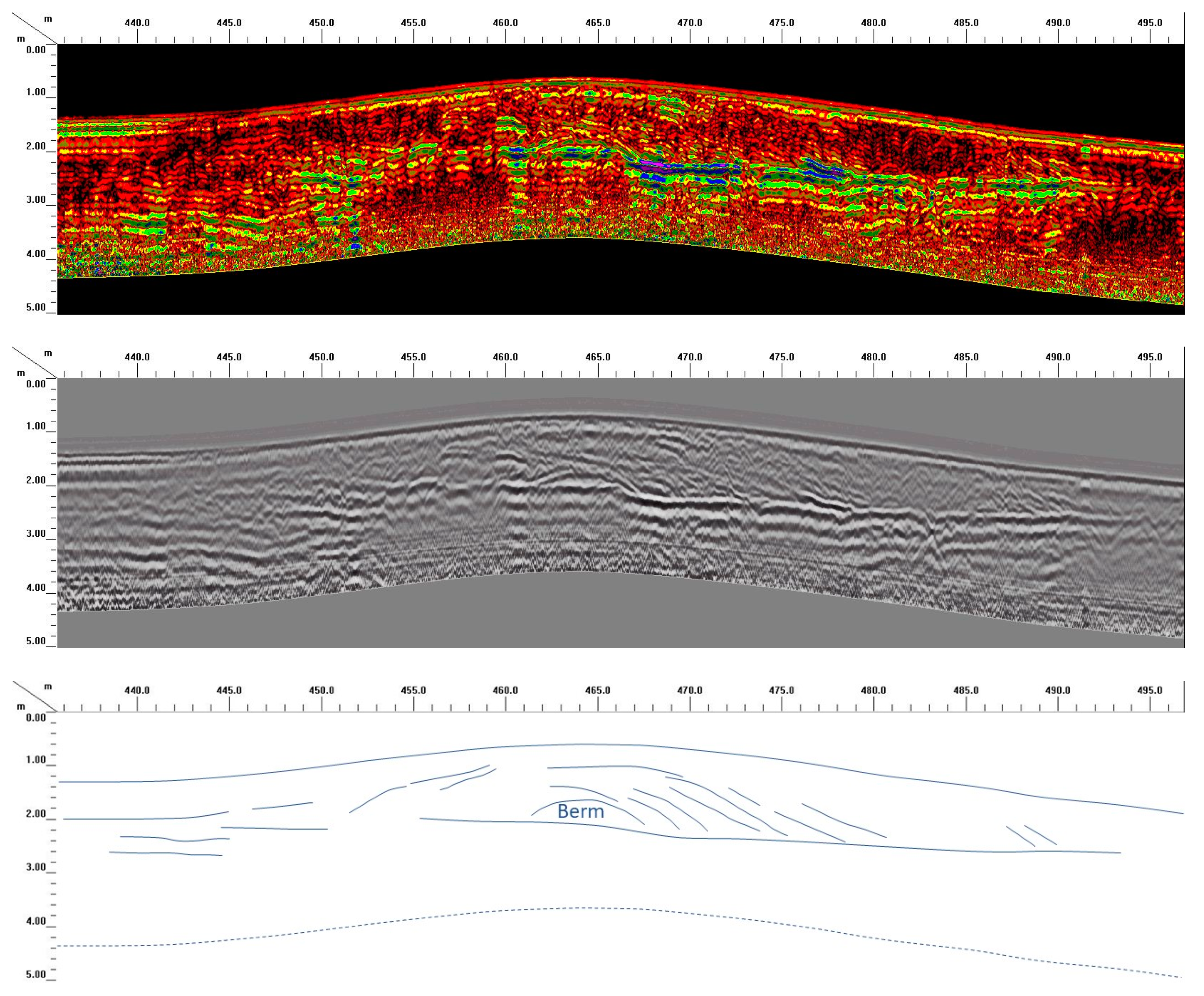
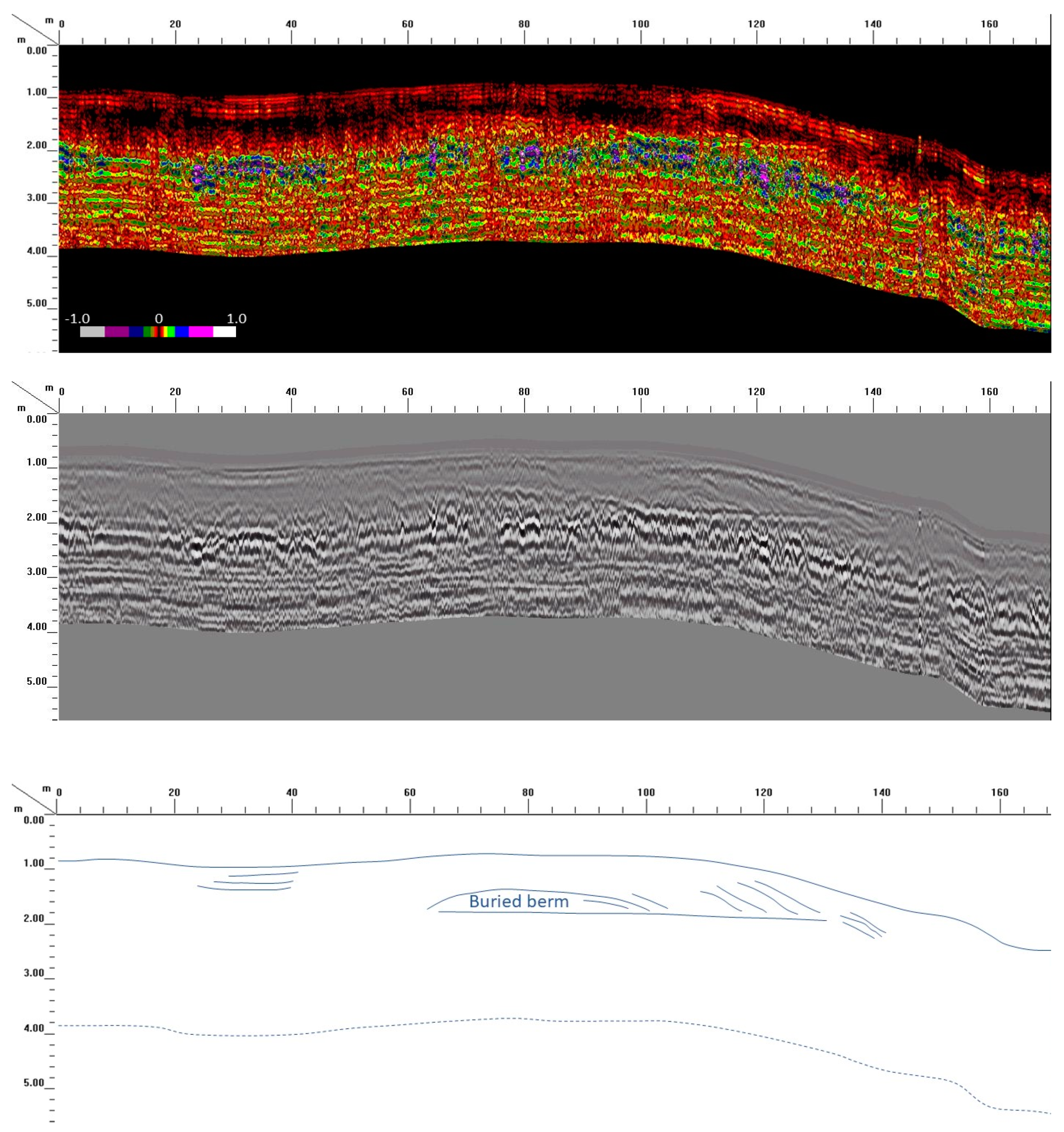
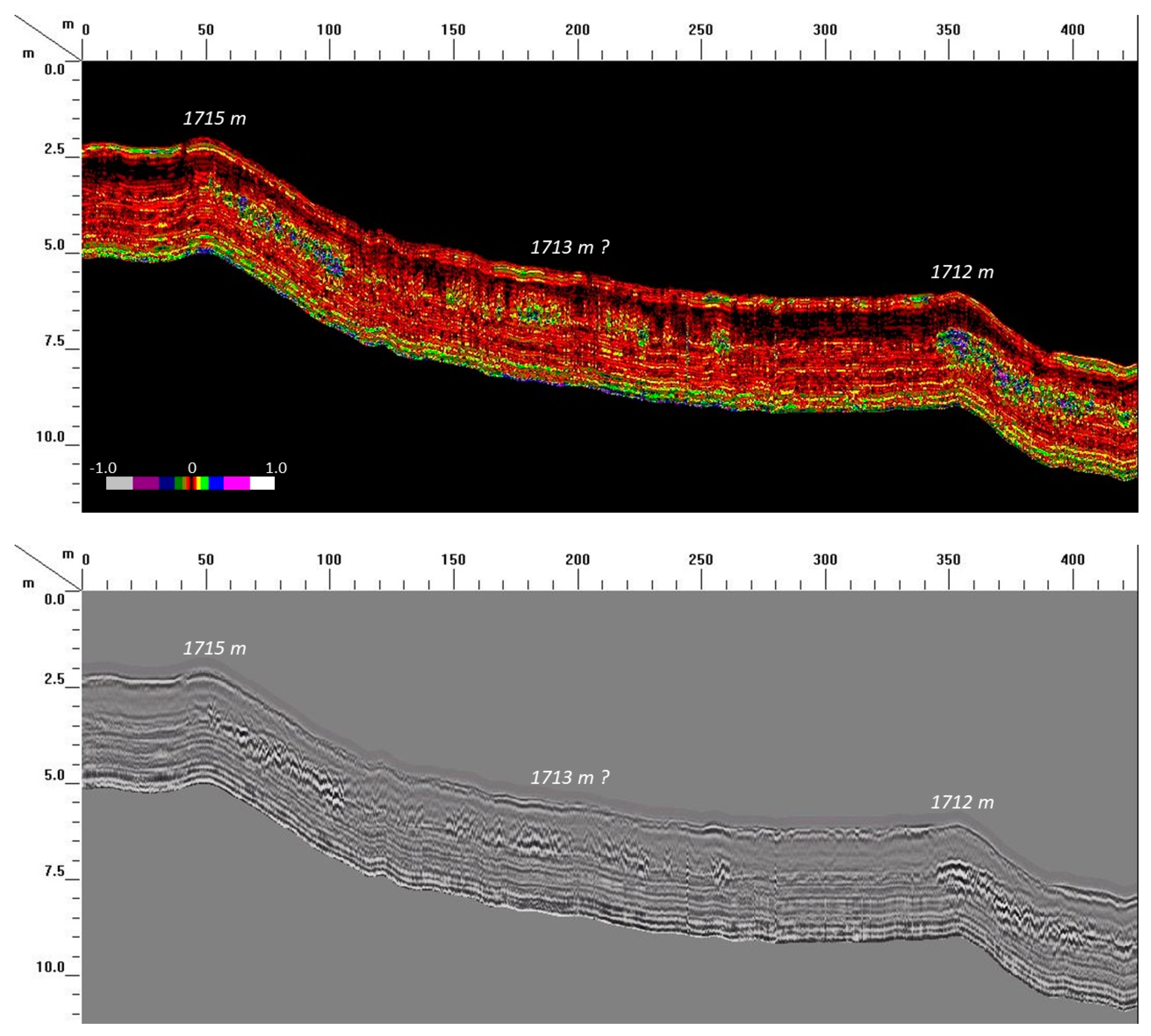

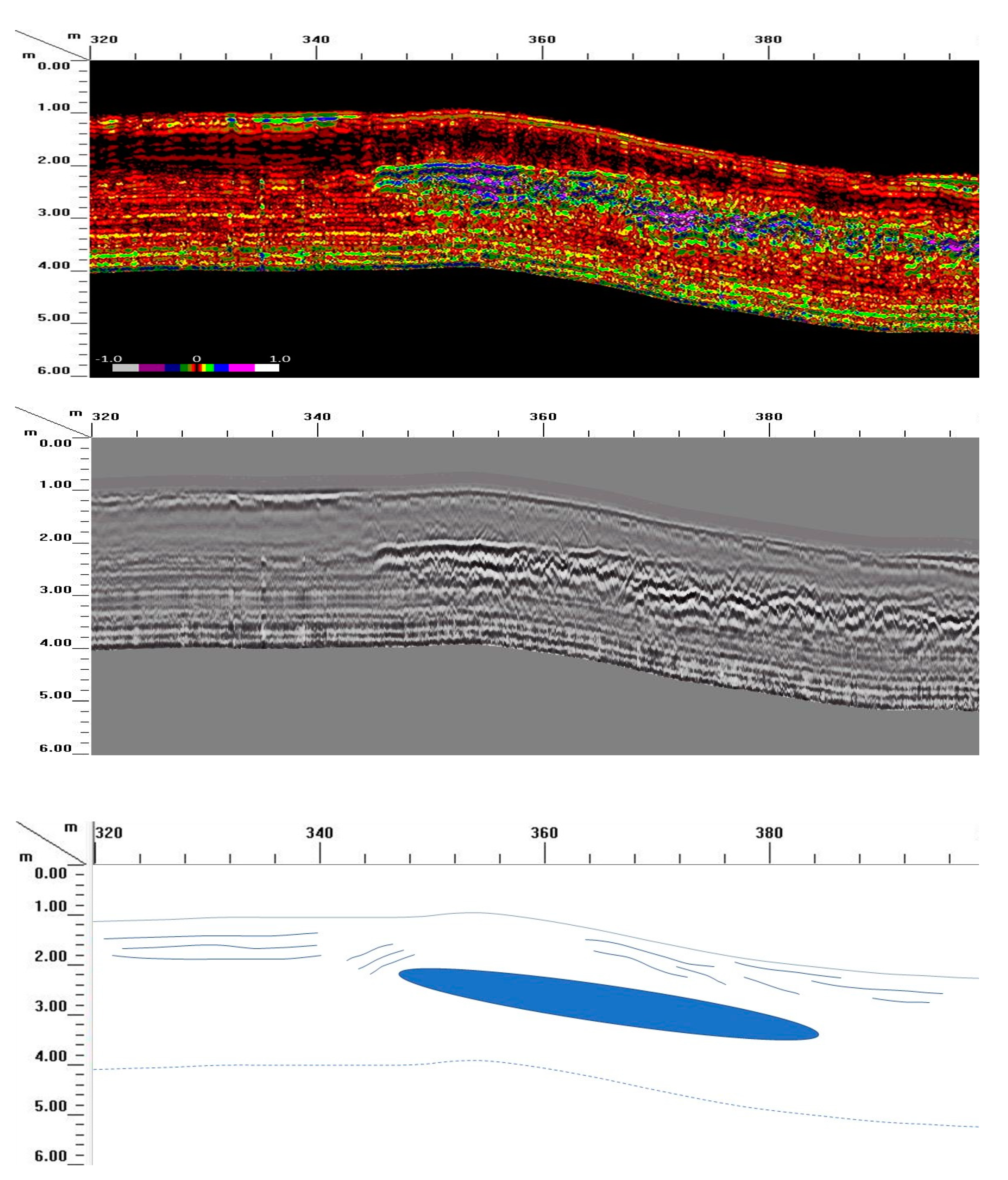
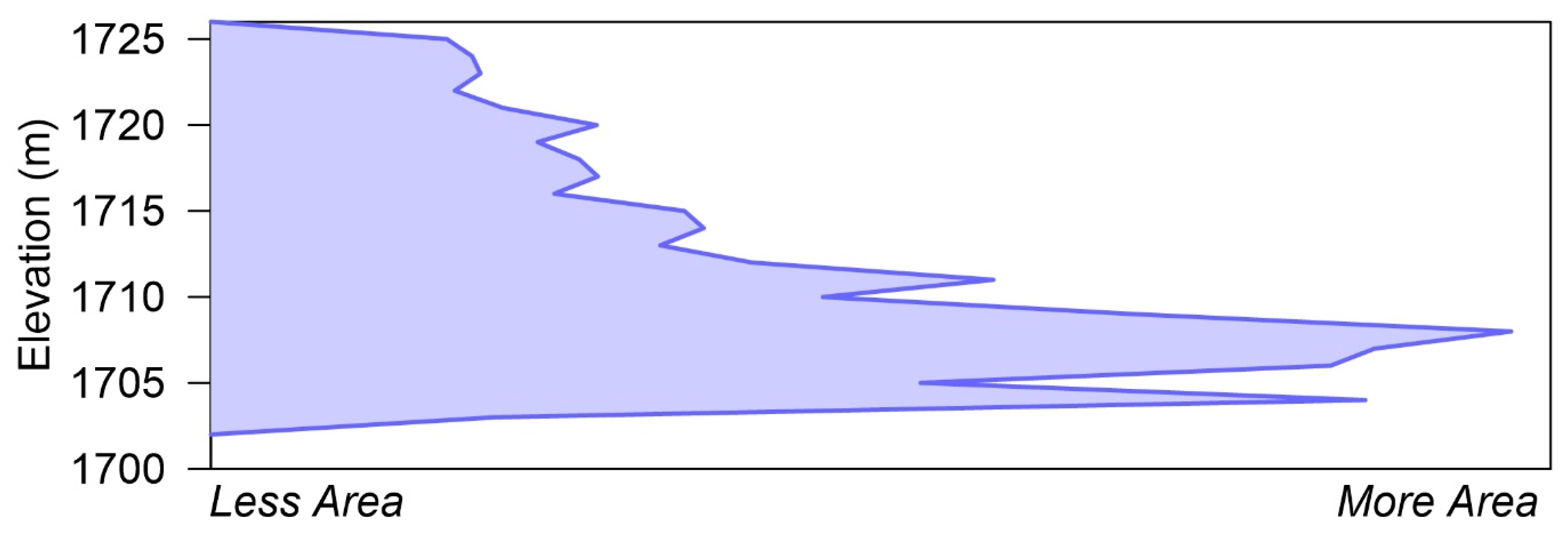

© 2020 by the author. Licensee MDPI, Basel, Switzerland. This article is an open access article distributed under the terms and conditions of the Creative Commons Attribution (CC BY) license (http://creativecommons.org/licenses/by/4.0/).
Share and Cite
Munroe, J.S. Ground Penetrating Radar Investigation of Late Pleistocene Shorelines of Pluvial Lake Clover, Elko County, Nevada, USA. Quaternary 2020, 3, 9. https://doi.org/10.3390/quat3010009
Munroe JS. Ground Penetrating Radar Investigation of Late Pleistocene Shorelines of Pluvial Lake Clover, Elko County, Nevada, USA. Quaternary. 2020; 3(1):9. https://doi.org/10.3390/quat3010009
Chicago/Turabian StyleMunroe, Jeffrey S. 2020. "Ground Penetrating Radar Investigation of Late Pleistocene Shorelines of Pluvial Lake Clover, Elko County, Nevada, USA" Quaternary 3, no. 1: 9. https://doi.org/10.3390/quat3010009
APA StyleMunroe, J. S. (2020). Ground Penetrating Radar Investigation of Late Pleistocene Shorelines of Pluvial Lake Clover, Elko County, Nevada, USA. Quaternary, 3(1), 9. https://doi.org/10.3390/quat3010009




